![]()
![]()
![]()
Use LEFT and RIGHT arrow keys to navigate between flashcards;
Use UP and DOWN arrow keys to flip the card;
H to show hint;
A reads text to speech;
20 Cards in this Set
- Front
- Back
|
Indoor air quality city statistics , health issues |
Occupational lung disease is number one work related illness. 13 million school days miss due to asthma, 24.5 million work days. EPA top 5 health risk. Preventable deaths |
|
|
AIQ stat buildings |
People spend 90% of time indoors. Edu percent buildings recently constructed or a modeled have IAQ complaints |
|
|
Increase exposure to indoor air quality problems |
Construction of more tightly sealed buildings. Reduce ventilation rates to save energy. Useless and thetic building materials and furnishings. Use of chemically formulated personal care products. Used to pass a size and cleaning supplies. And crease complex city of modern building systems. Building deterioration due to age, improper maintenance design |
|
|
Key factors for understanding indoor air quality |
Sources of indoor air pollutants. Heating ventilation and air conditioning systems. Put and pathways. Occupants |
|
|
Pollutants indoor versus outdoor |
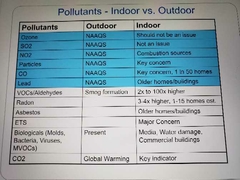
|
|
|
Building related illnesses |
Legionnaires disease, asthma, Humidifier fever have been directly traced to specific building problems |
|
|
Sick building syndrome |
Dry or burning mucous membrane in the nose eyes and throat, sneezing stuffy or runny knows, fatigue, headaches, dizziness common Asha irritability and forgetfulness |
|
|
Common sources |

|
|
|
Radon |
Radon is naturally occurring radioactive gas and can be found in any home. Number one cause of lung cancer after cigarrette smoke. 21000 deaths a year. The EPA recommends every home because it for raid on |
|
|
Radon mitigation Basement |
Sub slab suction passive and active. Drain tile suction, sump hole suction, or block wall suction |
|
|
Radon mitigation crawl space |
Sub membrane suction. Crawl space depressurization or ventilation |
|
|
Radon mitigation. Other |
Sealing House/room pressurization Heat recovery ventilation Natural ventilation |
|
|
Areas of concern for carbon monoxide poisoning |
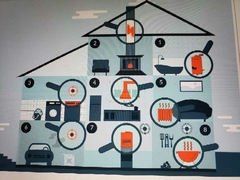
|
|
|
Relative humidity psychometrics |
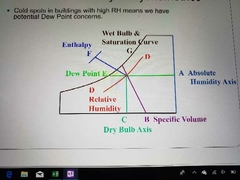
|
|
|
Seasonal humidity issues Indoors |
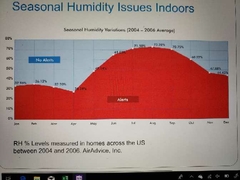
|
|
|
Particulate matter and bio aerosols |
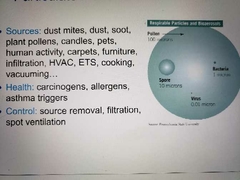
|
|
|
Filtration mechanical |
Media and HEPA |
|
|
Filtration electrostatic percipitators ionizers and EAC |
Consideration, Ozone production, pressure drop, maintenance costs last period, effectiveness ratings |
|
|
Common indoor VO c's and sources |
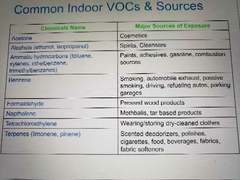
|
|
|
The building Envelope |
Erema from areas of high pressure to areas of relatively lower pressure, infiltration of outdoor air is determined by pathways and pressure Differences . Designing negative pressure spaces and buildings smoking Kitchens bathrooms garages. |

